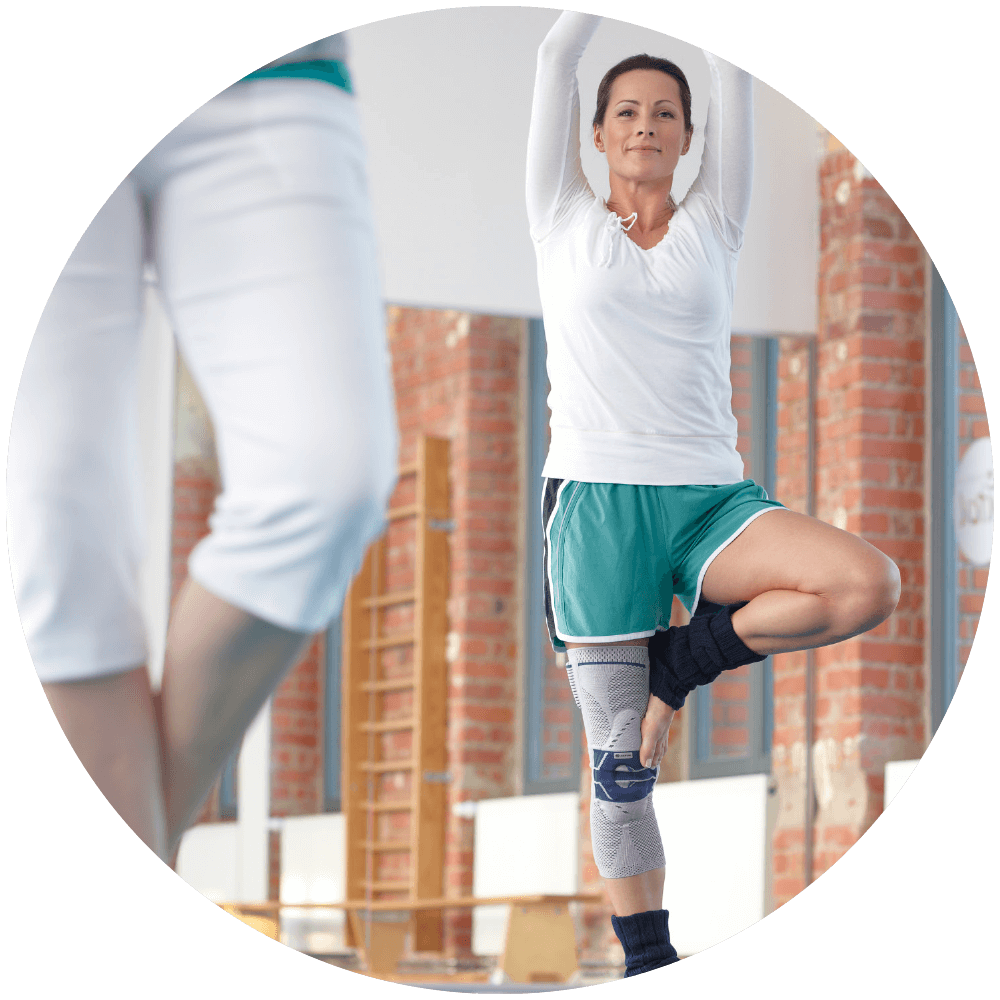Secure and stabilize your knee with GenuTrain S
An unstable knee cap can be challenging. You might ask yourself with every step - will it happen again? Knee cap tracking disorders and subluxations can usually be treated conservatively. In most cases, home remedies can help reduce pain, stabilize the knee and train surrounding muscles. This article tells you more about how to treat knee cap instabilities, knee support recommendations and what to do to prevent reoccurrence.
GenuTrain P3
Centers and secures the kneecap, activates the muscles and accelerates the healing process.
P3 stands for “permanent patella protection” - because the GenuTrain P3 reliably guides the patella during movement. The kneecap is centered using a specially shaped Omega pad, providing massage to the vastus medialis muscle and pain-relieving compression massage on Hoffa’s fat pad below the patella. The kneecap is covered to counteract tilting while the adjustable corrective strap helps protect it from drifting sideways. A second wedge-shaped massage pad at the upper outside edge of the brace eases the pressure on the tendons connected to the kneecap, minimizing the outward pull. This combination provides relief and support for the kneecap during its natural movement. Bauerfeind's medical-grade compression knit and massage pads relieve pain during movement, help reduce swelling and activate the muscles that stabilize the joint.
Treatment options for an unstable knee cap
The knee joint combines the thigh with the calf through a group of muscles and ligaments. While moving, the knee cap glides in a groove up and down the thigh bone.
Patellar tracking or subluxation occurs when the knee cap does not move properly in its grove. This can be due to anatomical malformation such as high-riding patella, muscular imbalances or injuries. Most injuries move the knee cap to the side. This can also cause ligaments to stretch or even tear.
Mild patellar tracking disorders and subluxations usually heal within 6-8 weeks. After an initial period of RICE Therapy (Rest, Ice, Compression, Elevation), a knee brace or support like the Bauerfeind GenuTrain P3 can help to ease pain, counteract drifting and reduce excessive strain on the knee cap. Depending on the cause of your patellar tracking disorder, your doctor may also prescribe crutches to relieve your knee from your weight for a while and physical therapy to evenly strengthen your knee muscles. Insoles can help balance your feet and further reduce stress on your knee.
BEST SUPPORT I HAVE OWNED!
If you have medial or lateral issues with your knee, this brace will definitely help. It‘s pretty lightweight compared to others I own and that allows me to still workout using it. (...) Using this as a daily active knee brace has been the best for me so far.
GenuTrain P3 Customer Review from: Brennan

Made for every-day use
Extra breathable, moisture-wicking knit material

Improves Confidence
Stabilize the knee and secures the kneecap

Low-profile
Lightweight, low profile design, can be worn under pants
How to prevent Patellar Tracking from reoccurring
Stretch and strengthen the muscles around your knee to stabilize and keep excessive strain off the joint. Inner and outer thighs, as well as quads, need extra attention. All muscles have to work together evenly. Wear the GenuTrain P3 knee support to help center your knee cap, ease pressure and relax muscles. Together with your healthcare providers, you can develop a workout routine that works for you.
- Wear the GenuTrain P3 knee support – for better proprioception, to stabilize and massage your knee joint while being active
- Strengthen the muscles around your knee to ease pressure and stabilize the knee joint
- Increase activity gradually
- Wear protective gear while doing sports
- Maintain a healthy weight – to keep the stress on your joints low





